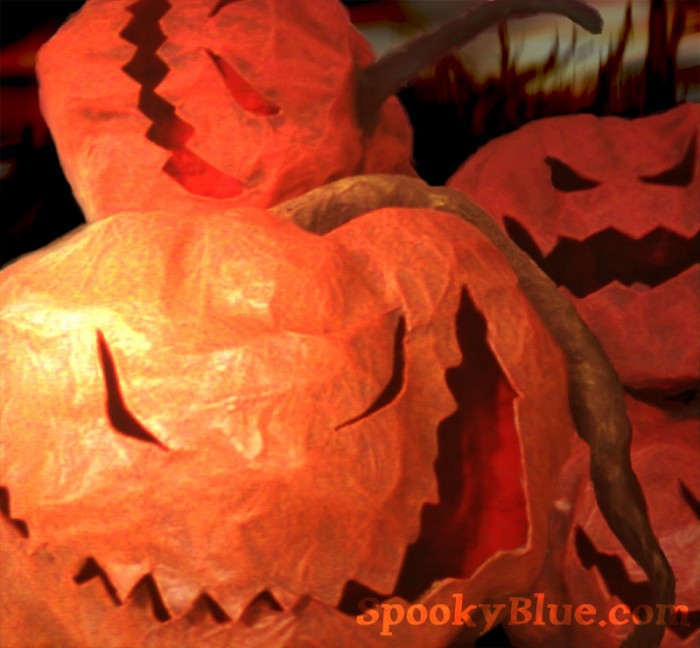If there’s one question I get 20 times a day, this is two of them.
The simple answer is spar urethane. There. I just saved you a long read that covers way more thought and analysis than I ever intended upon starting this article. So, if you’re satisfied, then I’m satisfied. Otherwise …
Step one to the long-version of the answer is another question: How much protection do you really need? If your haunt is one-night-only and gets packed back into the garage by 10:00, then all you’re going to encounter is a little dew. In haunts where zombies and scarecrows spring up in September and are your drinking buddies on St. Patrick’s Day, the elements become more of a concern. The subtly different terms waterproof and weatherproof demand a little clarity.
Waterproof is defined as “impervious to water”, while weatherproof means “can withstand exposure to weather without damage”. This is essentially the difference between zombies melting in the rain and suffering acute sunburn. On the list of things that hate Halloween props and want to destroy them, sunlight is number three, preceded by dirty rotten vandals, with moisture at the top.
It’s inevitable that your graveyard dwellers will soak up a certain amount of sunlight. If this is limited to just a few days each October, it could be years before the results of accumulated UV radiation exposure become noticeable. For longer periods, what would it hurt to line them up for a Coppertone spritz every so often?
With sunspots out of the way (dirty rotten vandals are a topic for another day), we’re down to public enemy number one: Water.
In addition to the amount of exposure your props are going to encounter, choosing the best protection has a lot to do with the type of glue that you use. I’m not a fan of traditional flour-based paste recipes because a little moisture can quickly turn a zombie into a rancid biscuit. (From direct observation of an incident in which Spookyblue-co-founder-and-brother Joe was forced to chuck a malodorous biscuit skeleton over the fence along with 100 million fruit flies.) Even with the addition of salt, oils, and other mold mitigators, it must be completely and utterly sealed against moisture or it will turn bad and eventually fall apart. White glue is much more forgiving. It may soften when wet, but it remains adhesive, so it’s not a tragedy if some moisture seeps in.
Having covered the relevant provisos, choose the scenario that best fits you.
Some other tips that can improve your prop’s chances of surviving the winds and rains of October:
Alternate title: How many licks does it take
to get to the pumpkin roll center of a Grumble top?
 “Horde of pumpkins” by our friend Valerie
“Horde of pumpkins” by our friend Valerie
Minion TSchroder writes (to Grumble, by accident):
“Hey was wondering how many layers it takes to make a grumble pumpkin head. I tried your idea to use a plastic bag and fill it with paper. Hope it works really excited about how it is turning out.”
Dear tschroder,
Grumble say what mean, “how many layers make Grumble head”? Not know what talk about! Not do puny Spook Man mashy paper stuff!
…
Oops, Spook here. I’ll take this one.
Sorry, Grumble gets agitated when people ask him prop questions. He’s been on this “Dear Abby” kick, and wants questions like “Is my roommate an alien?” or “When is the best time to plant birdseed?” He’s really sensitive, in his own way, and I think he feels neglected because I get way more mail than he does.
Anyway, regarding your pumpkin question, lots.
The more layers you use to build a Stolloween-style pumpkin, the better. You want it to be strong enough to survive the de-gizzarding process (when you cut a hole in the bottom and pull out the insides). If you choose clay for detail work, you’ll need a nice thick shell to hold up the extra weight. Paper clay, when you pile it on, can get heavy. But it’s great for building up all those neat pumpkiny ridges and things. And boils. Some of the best pumpkins have boils.
If you’re lucky enough to have some really thick material, like brown paper shopping bags, then you may only need two or three layers. For newspaper, recycled phone books, and other thinner material, you may want to add up to five layers. The type and thickness of your glue plays a part, too. Try a 3:1 mixture of Elmer’s glue and water. That is, three parts glue to one part water.
You can test your (fully dried) pumpkin head’s tensile strength by pressing down with your thumb in various spots. This will give you a measure of its “Yield strength”, or the amount of stress a material can withstand without becoming permanently deformed. If it gives too easily, or if you push through and accidentally pop yourself in the eye, then you might consider adding a few more layers.
This is a very subjective test, so a dent here or there doesn’t necessarily mean your pumpkin isn’t plenty strong overall. But if it worries you, then add an extra layer. Another trick used by some large-scale model builders is to “harden” the piece with a coat of glue. Just paint on the 3:1 Elmer’s mixture and let it dry. Repeat as many times as you like.
Thanks for writing, and have a great haunt!
Further reading
Grumble’s paper mache pumpkin head
Stolloween – Gourd guru and professional patriarch of paper mache